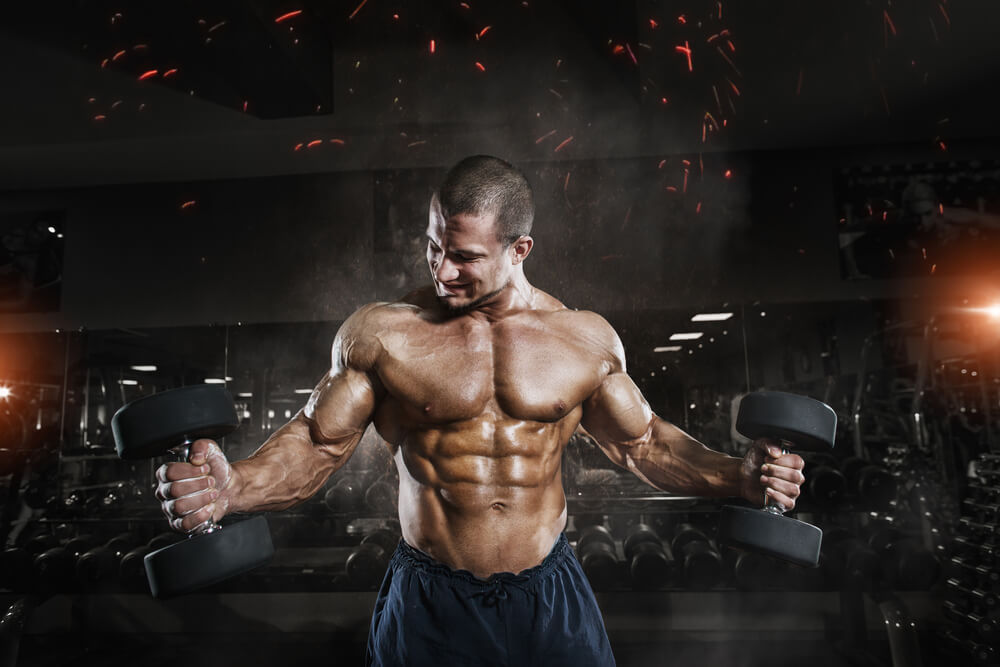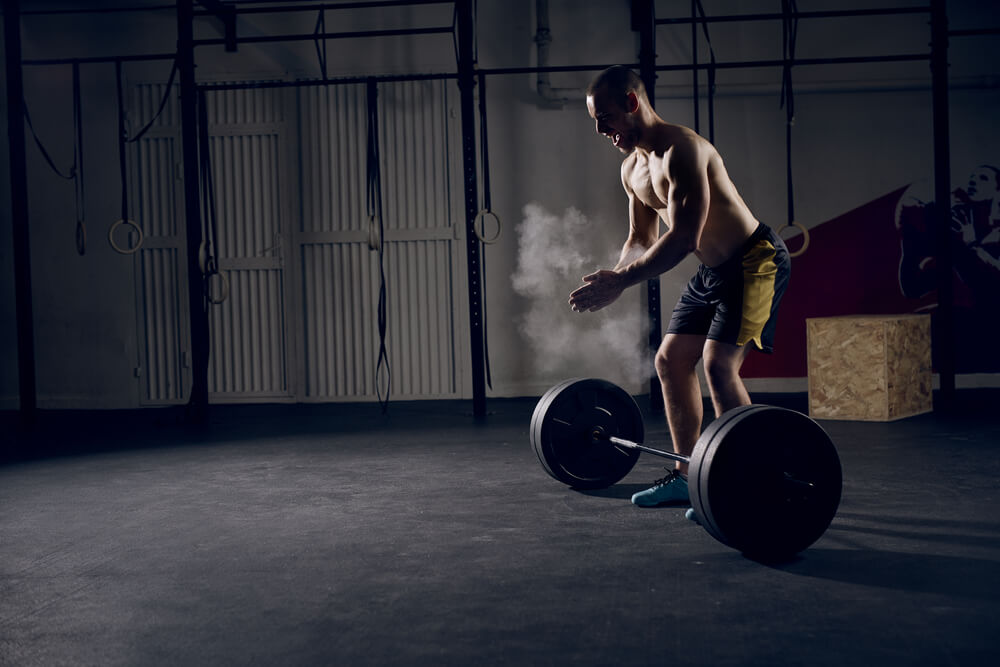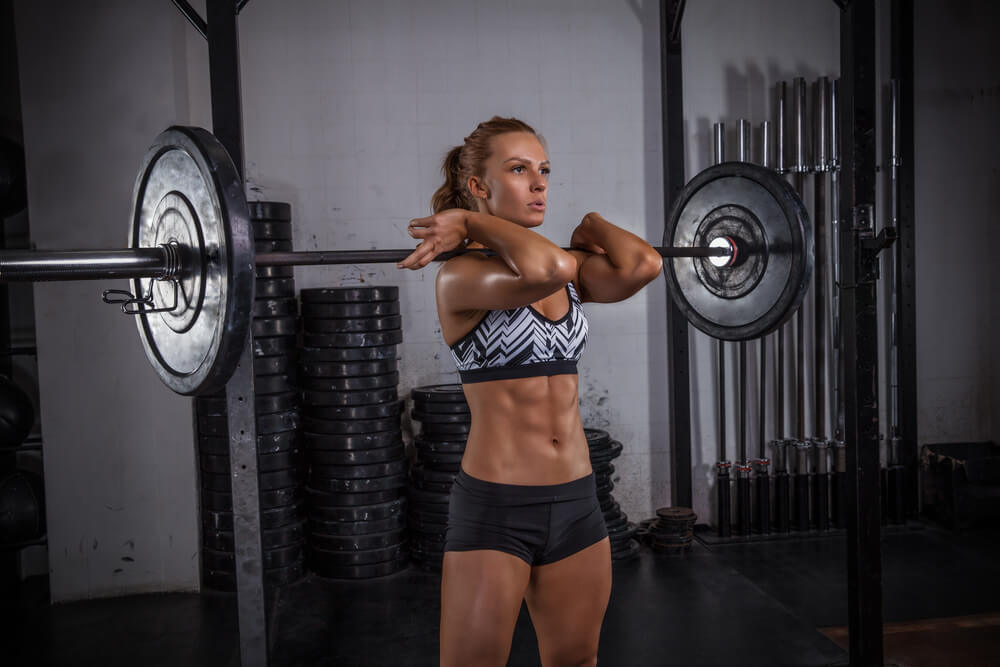
Train smart! Workout like the fittest people on the planet. Here’s what to avoid in your next session.
If you’re into staying in shape, there’s a pretty good chance you belong to a commercial gym. You know the places. We’re talking New York Sports Club, LA Fitness, 24 Hour Fitness, etc. There’s also a good chance that soon after you signed up, you got offered a free personal training session.
As a student of the exercise game, you probably took advantage of that offer, hoping to gain some insight into how the trainers who look like Greek statues got there. What happened next shocked you. You got your ass kicked by the so-called expert, nearly puked a few times and got really sour toward the personal training business as a whole.
Don’t they understand that’s not what you want?
Isn’t that why you had a conversation about goals?
How is a burpee supposed to help you get big biceps?
Regardless, they keep harassing you to try another session with a different trainer.
The truth is that if you watch a trainer work out, they most likely don’t do any of the 10 exercises listed in this article. Why? Well, we address that here too. So what gives and why do they make every single one of their clients do it, day in and day out? We’ll fill you in. Here are the top 10 exercises trainers won’t do themselves.
10 Exercise Routine Trainers Won’t Do Themselves
#1 Burpees
Trainers hate, hate, hate doing this exercise. Why? Because it’s hard! Doing 10 burpees after a set of squats or another hard exercise will put most people down for the count. And, although the trainers in your gym may look good, are they actually in shape? I bet not. Most give up on conditioning after they get cut from whatever sport they played or when they realize they’re not going to make it in the bodybuilding world.
Every trainer I’ve ever seen or worked with puts his or her clients through the ringer by way of this exercise on a daily basis and the clients don’t see results. Wonder why? Maybe it’s because the body gets used to it. Spoiler alert: It does. You need to change up your conditioning to continue seeing results.
#2 Squats
The squat is the foundation of any fitness program. It’s a major strength builder and blood testosterone booster (muscle builder). Plus, it adds shape and size to anyone’s rear end, and we all know it’s a good feature for a potential mate to have. Let’s face it: Yoga pants on women and jammers/boxer-briefs on guys wouldn’t be nearly as awesome without squats. But, I’d be willing to bet you never see a trainer doing them, even though they make all their clients do some form or another of the squat.
This is because most people (in general, not just trainers) only care about the “beach muscles,” like the chest, abs, biceps, shoulders and back muscles. You can’t see legs when someone is wearing board shorts. So what’s the trainers’ excuse for not doing it? “Oh, I run, so that’s good enough for legs. You can’t see them when I’m on the beach anyway.” Squat heavy and often. Doing that will ensure you’ll gain strength and size everywhere, not just your legs.
#3 Cleans
This one’s a no-brainer to explain. An overwhelming percentage of trainers plain old don’t know how to do this exercise, let alone teach it. Take a walk through any pro or collegiate team’s weight room that has a legitimate strength coach running each team’s lifting session. There is a solid chance that if that strength coach is worth their salt, the team will do cleans or a variation at some point or another. It’s an expression of pure power from hips into the ground.
The stronger an athlete, the heavier they clean and that power translates into things like the ability to run fast and jump high, not to mention it’s a great exercise for mobility in the shoulders, hips, ankles, knees, back, etc. The list truly goes on and on. There are a lot of reasons to learn to do cleans the correct way (not the CrossFit way). Sadly, most trainers choose not to take the time to do so.
#4 Snatches
This exercise is much the same as the clean, just with a different grip and end position. But, it is viewed as more dangerous than the clean even though there are fewer elements to teaching it. Contrary to popular opinion, however, the snatch is extremely beneficial to shoulder mobility and stability to those who do not have a preexisting injury. It is not a danger to shoulder integrity. As for why trainers don’t or won’t do it, see the clean.

#5 Deadlift
Like the squat, an entire fitness program can be designed around the deadlift. Done right, the benefits are much the same as the squat with a little less knee and ankle flexion. Done wrong, it can be hazardous to back health, just like the squat. What’s the trainers’ reason for not doing them? They’ll say it is because of the inherent danger that if it’s done wrong, you can hurt your back. Also, much like the Olympic lifts (clean and snatch), most trainers don’t know how to teach it or do it correctly.
This one you can’t blame a trainer for though. A deadlift is a true hip-hinging exercise, and it’s pretty difficult to explain a hip hinge. Essentially, stick your butt out like a stripper and keeping your back straight, bend over. That’s a hip hinge. Hip hinging is one of the single most vital motions a person can learn to become stronger and more mobile. And, let’s not forget to mention that hip extension is required to move out of that hinged position and hip extension is also the base of the clean and snatch. So you run faster, jump higher and do all sorts of athletic things better with deadlifts.
#6 Cable Face Pull
This is one of the more obscure exercises on the list, and that alone could be a reason you don’t see trainers doing it. But, there are a few more key points to mention. The feeling one gets in their traps and shoulders (rear delts to be specific) during this exercise is pretty unpleasant – big burn.
However, this move will solve most upper back problems, especially for those of you who sit at a desk and hunch a lot. This will teach you how to put your shoulder blades into position and keep them there. After a while, it will become a habit and poor posture will become a thing of the past, along with back and neck pain.
#7 Bent-Over Row
Okay, so trainers don’t actually neglect this one, but so many do it wrong that I felt it had to be included on the list because what they do looks like more of a leaning shrug than a bent-over row.
In this exercise, the idea is to work the lats and scapular musculature out. This is only possible when the hips are hinged properly (see: deadlift) and the back is parallel or nearly parallel to the ground. From that position the hands should be palms-up (underhand) and slightly wider than shoulder-width apart. Keeping the rest of your body rigid, your elbows should drive up to the ceiling. The bar should contact your body somewhere between your chest and belly button. Pause and slowly lower it.
The overwhelming majority of trainers and gym-goers alike cheat on this exercise in one or many ways. How? Some do so by allowing their knees to bend more than is needed to do the exercise right and shortening the range of motion. Others do so by not hinging properly. Then, there are those guilty of not leaning forward far enough. Finally there’s using power to pull the bar to the torso. The list goes on.
This is actually a very hard exercise to do correctly, and even harder to do right when the weight gets heavy. Therefore, when one does not see a strength increase from this exercise, it is probably because the exercise is being done wrong and not targeting the muscles or motion the lifter wants to train.

#8 Front Squats
On the rare occasion one spots a trainer doing squats, there’s an occurrence even more rare: A trainer attempting to do front squats. There is a commonly accepted way to hold the bar on the front squat, which is bar resting on deltoids, arms extended then crossed to touch the opposite shoulder.
Again, unless the lifter has a preexisting condition that does not allow the proper grip (detailed soon), there is no reason that a front squat can’t be done right. The proper way to support the bar is across the deltoids, elbows bent so the thumbs of your hands are just outside the same side shoulders, upper arms parallel to the floor. Ever watch the Olympics on TV? It’s the way that the lifters hold the bar in the clean and jerk just before pressing the absurd amount of weight over their head.
The reason for this error is usually due to the trainer not having adequate shoulder mobility to hold the bar in the proper manner. The issue with improper front squatting is that the move in question is a progression to an aforementioned move: The clean. You can’t catch a clean in an improper position, so why train half the move in the wrong position? That’s an impossible question to answer if you ask me.
#9 Hanging Leg Raise
This exercise is arguably the king of core/abs builders, yet one hardly ever sees it done. More often than not, trainers will have very tight calves and hamstrings and are lucky if, when attempting the hanging leg raise, they can get their legs in line with their hips.
Technically speaking, the legs should be completely straight and feet dorsiflexed (toes pulled towards head), putting the hamstrings and calves in a stretched position. This can be very uncomfortable to someone with a lot of tightness in those muscle groups. Not being able to reach that position (legs in line with hips) greatly reduces the effect of the exercise. Another note: Swinging completely negates the effect of the exercise by turning it into a hip flexor exercise versus a core stabilization exercise.
#10 Barbell Hip Thrust
I have a feeling that part of the reason for trainers not doing this exercise is because it looks silly, but it’s a great exercise. Aside from the obvious (glute development), it’s a real back saver for those who can’t deadlift or squat without back pain and is a great way of increasing the difficulty of the standard hip bridge.
Add to that the fact that glute strength is critical to back and knee health and you’ve got a recipe for a great exercise. It really is too bad that the barbell hip thrust is not often seen in the commercial gym setting by anyone, let alone the supposed experts (trainers).
Conclusion
Now you know the exercises trainers won’t do themselves and why. Here’s a tip: Most of these exercises are really good for you when done properly, so take the time to learn them from a pro (look for a CSCS certification along with experience in the collegiate setting) and program them effectively. You will find that if you do so, your progress will be faster than ever and you’ll be shattering your old records and looking your best in no time. Happy lifting!
By Michael Schletter, CSCS*D, NSCA-CPT*D
Latest posts by Terry M (see all)
- Garage Gyms - Aug 1, 2018
- Kettlebells – Why They Should Be Added To Your Routine. - Jul 24, 2018
- Weight Belts: What Are They Really For? - May 31, 2018










Hello Coach,
I am a high school strength and speed coach and read one of your articles. In it, you said you had used Coach Hatchs program. I have used that most every where I have coached at and wanted to bounce some questions off you if at all possible? I realize you are very busy and I do not want to impose on you but would greatly appreciate any advice I could get. Thank you.
Coach Kevin Smith
[…] plan, as long as it is followed, will work for you and help you lose weight. Combined with an exercise routine and you will begin to see progressive results that improve each and every […]